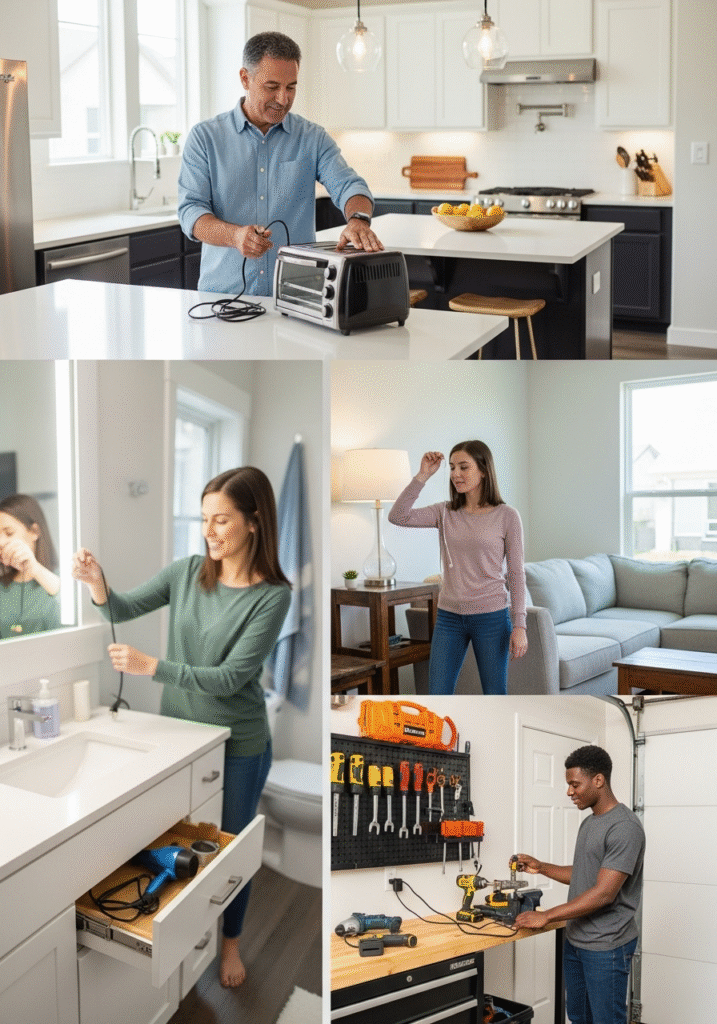Introduction
Electricity is a vital part of everyday life, powering everything from kitchen appliances to entertainment systems. But as essential as electrical appliances are, improper use or poor maintenance can lead to serious safety hazards—including electric shocks, house fires, burns, or even fatal accidents. That’s why understanding and following key electrical safety practices is crucial for every household.
This detailed guide covers a wide range of home safety tips for electrical appliances that are both practical and easy to implement. Whether you’re dealing with large appliances like washing machines and air conditioners, or small gadgets like hairdryers and toasters, this blog outlines the best ways to keep your family safe. From checking for frayed cords and avoiding water contact to using surge protectors and knowing when to unplug—each tip is designed to minimize risk while maximizing appliance lifespan.
Perfect for homeowners, renters, and families alike, this post will help you create a safer, smarter, and more secure living environment. Stay informed, stay protected, and enjoy peace of mind by following these expert-approved electrical safety recommendations for your home
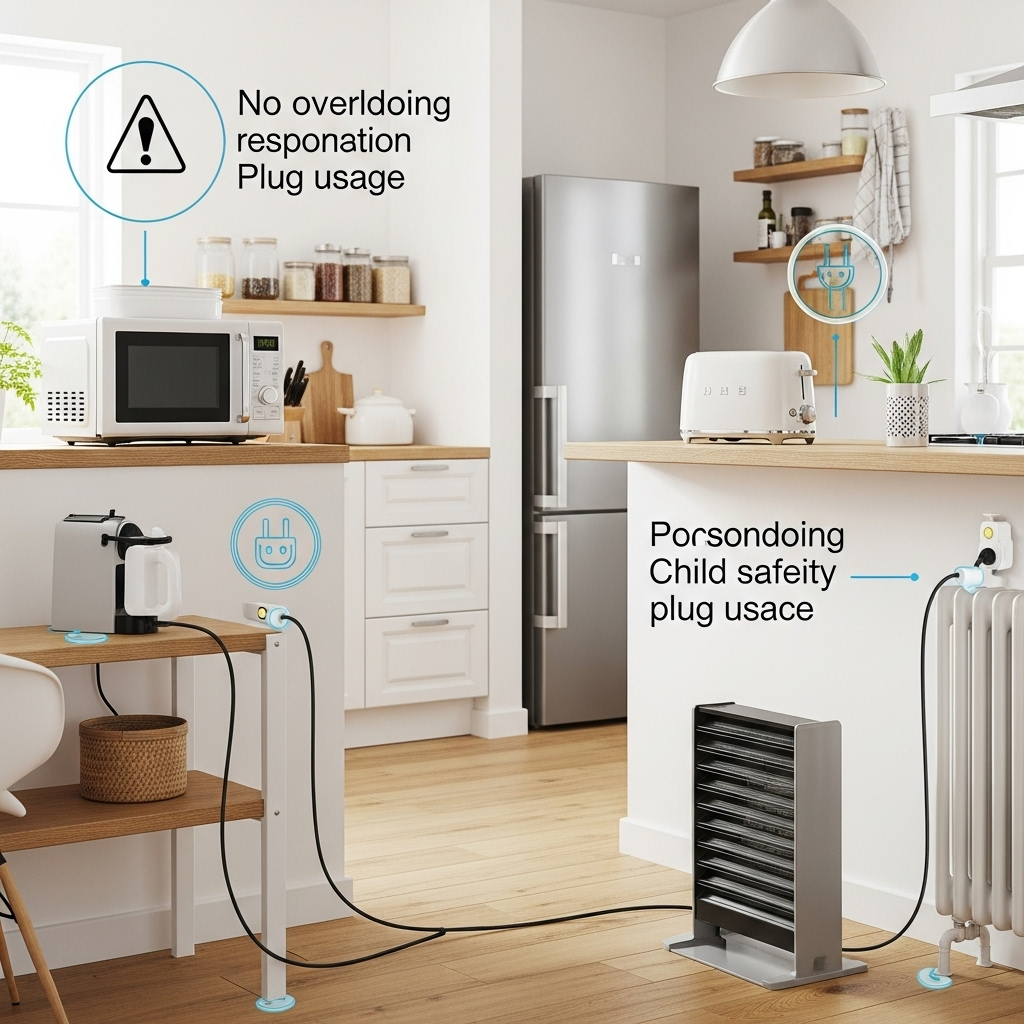
Why Electrical Safety Is Important at Home
Electrical safety isn’t just a technical concern—it’s a fundamental part of protecting your home, your belongings, and most importantly, your loved ones. Each year, thousands of residential fires are traced back to electrical malfunctions, faulty wiring, or the misuse of appliances. According to the National Fire Protection Association (NFPA), electrical failures and malfunctions cause tens of thousands of house fires annually, leading to property loss, injuries, and even fatalities.
By prioritizing electrical safety in your home, you’re taking proactive steps to:
- Prevent devastating fires and electrical shocks that can occur due to damaged cords, overloaded outlets, or outdated wiring.
- Extend the lifespan of your appliances by ensuring they’re used properly and maintained regularly.
- Cut down on unnecessary energy consumption, saving on utility bills and reducing your environmental footprint.
- Protect vulnerable family members, including young children and pets, who may unknowingly tamper with dangerous devices.
- Comply with home insurance policies, many of which require adherence to basic safety protocols to maintain coverage.
Whether you live in an apartment, house, or shared accommodation, electrical safety should always be a top priority. Small actions—like unplugging devices when not in use or scheduling regular inspections—can make a big difference in keeping your home secure.
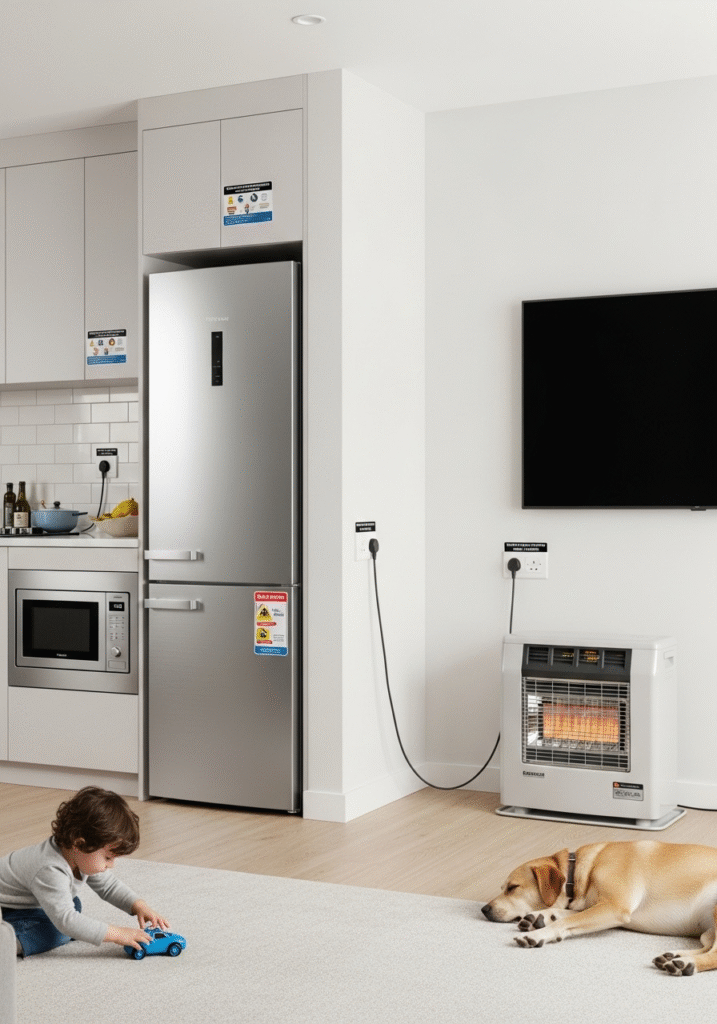
Common Electrical Hazards in the Home
Understanding common electrical hazards is the first and most crucial step toward creating a safe home environment. Many of these dangers are often overlooked in everyday life, yet they pose serious risks to your property and personal safety. Whether due to aging infrastructure, improper use of devices, or negligence, these hazards can lead to fires, electric shocks, equipment damage, or worse.
One of the most frequent issues found in homes is frayed or damaged wires and cords, which expose live conductors and can ignite nearby flammable materials. Overloaded outlets and extension cords are another major concern—plugging in too many appliances can overheat the circuit and lead to short circuits or fires.
Using electrical appliances near water sources, such as sinks or bathtubs, dramatically increases the risk of electrocution. Similarly, faulty or outdated wiring—often found in older homes—may not meet current safety standards, making them more prone to failure.
Other hazards include misusing high-wattage appliances, such as space heaters or hairdryers, and plugging too many devices into a single outlet, which stresses the electrical system. Lastly, using counterfeit or damaged products, especially chargers and adapters, can be extremely dangerous, as they often lack essential safety features.
By identifying these risks early, you can take the right precautions to protect your family and home from preventable disasters.
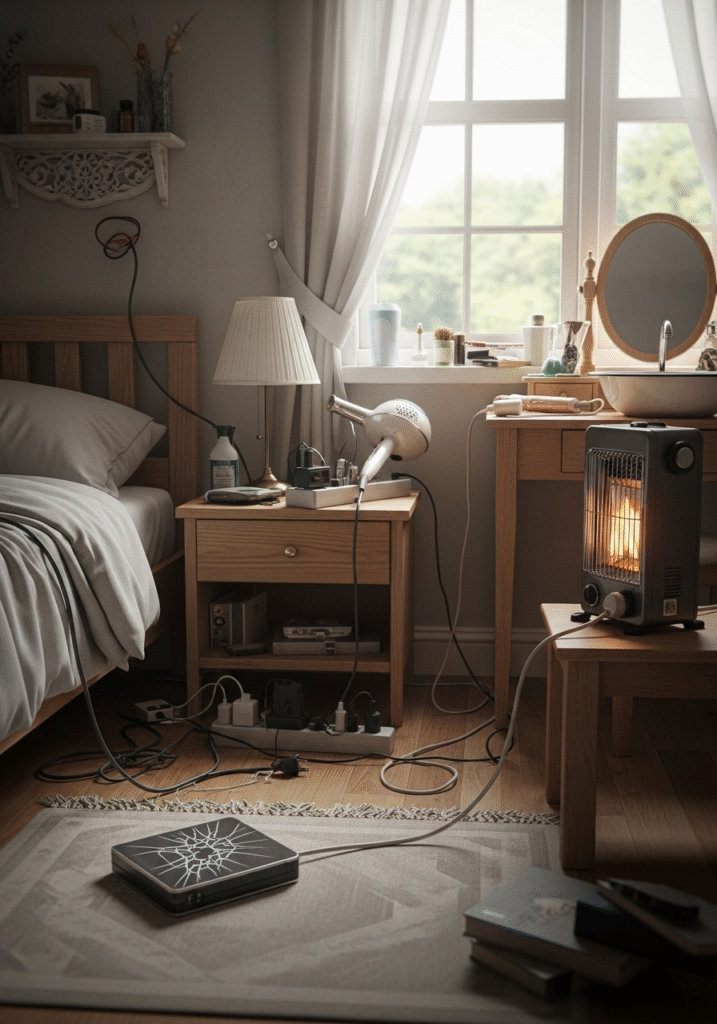
Top Home Safety Tips for Electrical Appliances
Electrical appliances are a part of our daily lives, bringing comfort, convenience, and efficiency into our homes. However, if not used responsibly, these same devices can become serious safety hazards. To ensure your home remains a safe and secure environment, it’s important to follow best practices when using electrical appliances. Here are some essential tips every homeowner should know:
- Read and Follow Manufacturer’s Instructions
Each appliance comes with a user manual for a reason. It contains important safety guidelines, including voltage specifications, proper usage techniques, and maintenance tips. Ignoring this information can result in misuse and potential harm. - Avoid Overloading Power Outlets
Plugging too many high-wattage appliances into a single outlet or extension cord can overheat circuits and cause fires. Always spread out devices and use power strips with built-in surge protection for added safety. - Use Certified and Tested Products
Only purchase appliances and electrical cords that meet recognized safety standards such as UL, ETL, or CE certifications. Avoid counterfeit or low-quality electronics, which often lack essential safety mechanisms. - Unplug When Not in Use
Appliances that remain plugged in continue to draw electricity. Unplugging not only conserves energy but also reduces the risk of electrical shorts, overheating, and power surges. - Keep Appliances Away from Water
Water and electricity are a deadly combination. Never operate devices near sinks, bathtubs, or wet countertops. Always dry your hands before touching plugs or switches. - Inspect Cords and Plugs Regularly
Damaged, frayed, or cracked cords can expose you to electrical shock. Replace them immediately—never attempt a DIY tape fix, as this can be a fire hazard. - Use the Right Extension Cords
Make sure the extension cord you use is rated for the wattage of the device. Use heavy-duty, grounded cords for powerful appliances and indoor- or outdoor-rated cords as needed. - Install Ground Fault Circuit Interrupters (GFCIs)
GFCIs are life-saving devices that detect electrical imbalances and shut off power instantly. Install them in areas prone to moisture such as kitchens, bathrooms, laundry rooms, and outdoor spaces. - Store Appliances Properly
When not in use, store appliances in cool, dry areas. Check seasonal items like space heaters or fans for damage before reuse. - Keep Children and Pets Safe
Use outlet covers, secure loose cords, and store dangerous appliances out of reach. Pets and children are naturally curious and at higher risk of electrical injuries.
Implementing these electrical safety tips will help protect your home, extend the life of your appliances, and give you peace of mind every day.
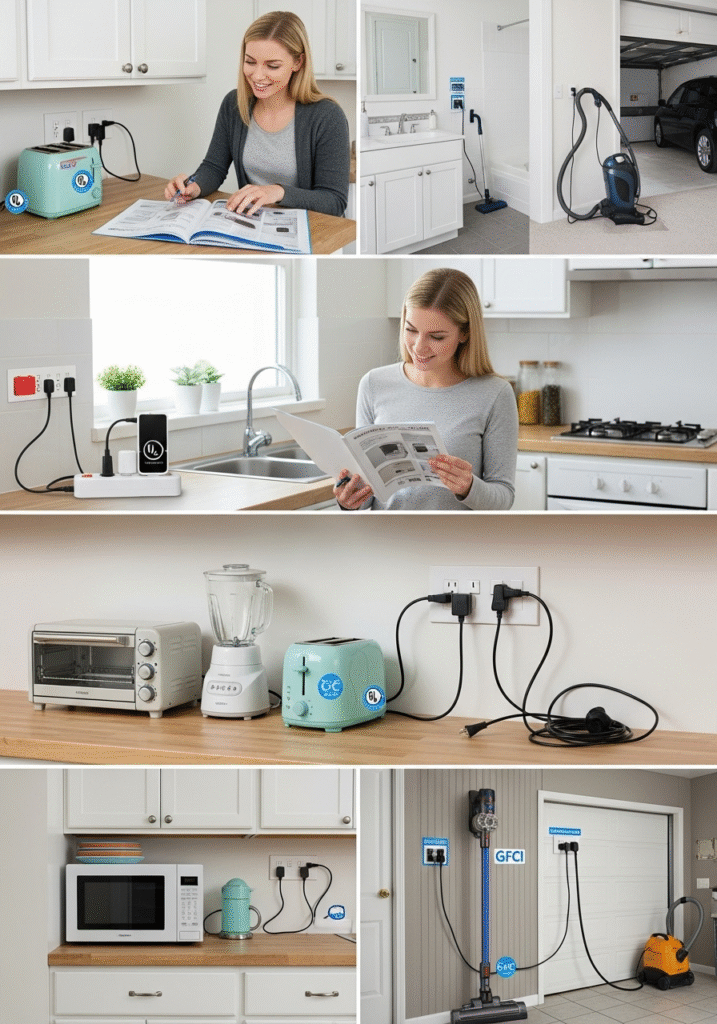
Specific Appliance Safety Tips
While general electrical safety is crucial, certain household appliances come with unique risks that require specific safety practices. Whether it’s the kitchen, laundry room, or bedroom, being aware of how to use appliances properly can significantly reduce the chance of accidents, fires, or electrical malfunctions. Below are key safety tips for the most commonly used household appliances.
5.1 Kitchen Appliances
The kitchen is a high-risk area for electrical hazards due to the combination of heat, moisture, and power use. Never leave toasters, ovens, air fryers, or electric kettles unattended while they’re operating. Grease buildup and food crumbs can easily ignite, so clean your appliances regularly—especially those used for cooking. Additionally, make sure electrical cords are kept away from hot surfaces like stove tops to avoid melting and electrical shorts.
5.2 Heating and Cooling Devices
Devices like space heaters, radiators, and air conditioners require careful placement and maintenance. Always keep heaters at least three feet away from anything flammable, including curtains, bedding, or furniture. Clean or replace air conditioner filters regularly to prevent the unit from overheating or circulating dust. Never block heating vents with furniture or cover them with blankets, as this restricts airflow and increases fire risk.
5.3 Laundry Machines
Your washer and dryer may seem harmless, but they also pose safety risks if neglected. One of the most common causes of dryer fires is lint buildup, so clean the lint trap after every use. Ensure your washer and dryer are plugged into properly grounded outlets and avoid using extension cords. Also, it’s best to avoid running these machines when you’re asleep or not at home, as malfunctions can go unnoticed and escalate quickly.
5.4 Charging Electronics and Gadgets
With the growing use of phones, tablets, and laptops, charging safety has never been more important. Always use original or certified chargers to avoid short circuits or overheating. Never charge devices under pillows, on beds, or couches, as the heat has nowhere to escape and could start a fire. Also, avoid charging overnight—especially on soft surfaces where airflow is limited.
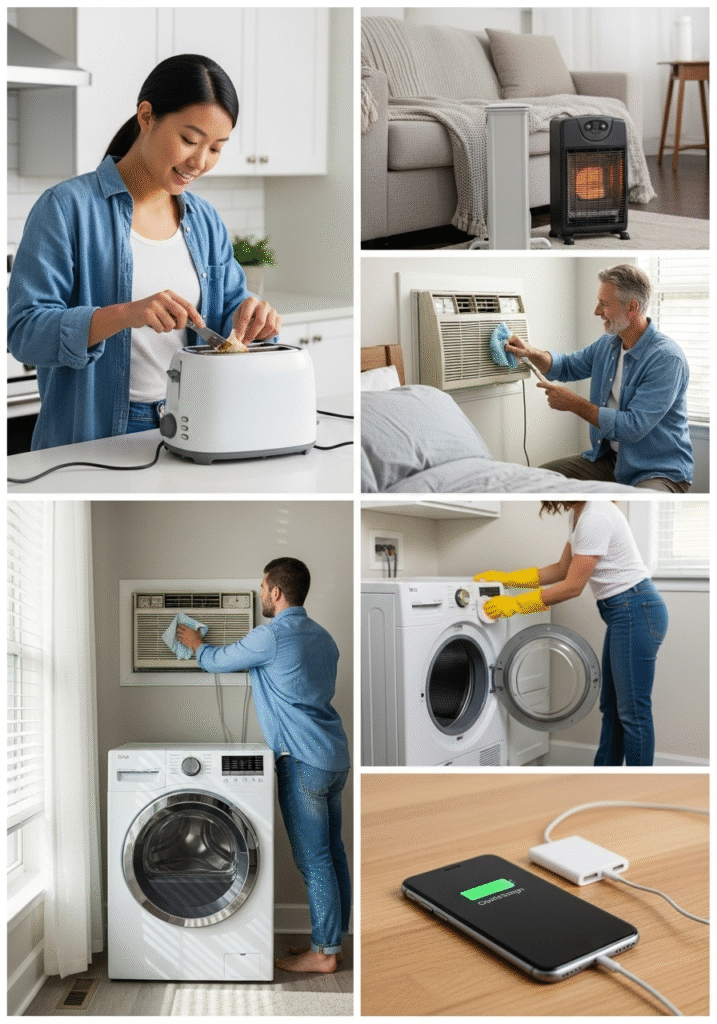
Specific Appliance Safety Tips
While most electrical appliances are built with safety in mind, wear and tear, improper usage, or manufacturing defects can cause them to become hazardous over time. Knowing how to recognize the early warning signs of a malfunctioning or unsafe appliance can help prevent serious accidents like electrical fires, shocks, or property damage.
One of the most obvious signs of trouble is sparking—if you notice sparks when plugging in or operating a device, stop using it immediately. This may indicate internal wiring issues or a loose connection that could lead to a fire. Similarly, if an appliance emits unusual smells, makes strange buzzing or popping noises, or becomes hot to the touch, these are clear signals that something is wrong. Overheating can cause components to fail or ignite nearby flammable materials.
Flickering lights or appliances that turn off unexpectedly may point to overloaded circuits or failing internal components. If you see burn marks around plugs, outlets, or cords, this often means excessive heat has already caused damage—posing a serious risk. Another critical warning sign is frequent tripping of circuit breakers, especially when using the same appliance. This indicates the appliance is drawing more current than the circuit can safely handle.
Ignoring these red flags can lead to disastrous consequences. If you notice any of these signs, immediately stop using the appliance, unplug it, and contact a licensed electrician or qualified technician for inspection or repairs. Never attempt to fix electrical issues yourself unless you’re trained, as this can worsen the situation or violate local safety codes.
Staying alert to these warning signs and acting quickly can protect your home, preserve your appliances, and ensure your family’s safety.
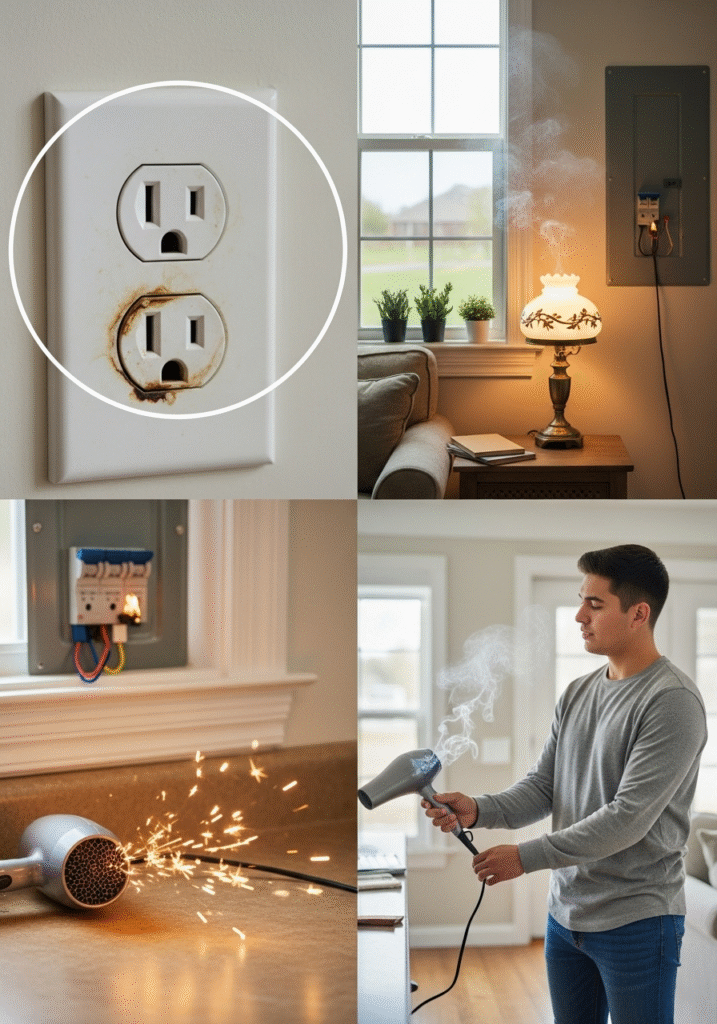
What to Do During an Electrical Emergency
Electrical emergencies can occur without warning and escalate quickly, making it essential to know how to respond calmly and correctly. Whether it’s an electrical fire, a shock incident, or a power surge, your actions in those critical moments can make a life-saving difference.
If an electrical fire breaks out, never use water to try to extinguish it. Water conducts electricity and can cause electrocution. Instead, use a Class C fire extinguisher, which is specifically designed for electrical fires. If the fire is small and contained, and you can safely reach your main power supply, switch it off immediately to stop the flow of electricity. However, never put yourself at risk—if the situation is too dangerous, evacuate and call emergency services right away.
In the event of an electric shock, avoid the instinct to grab the victim. Touching them directly could cause the current to pass through your body as well. Instead, use a non-conductive object—such as a wooden stick, broom handle, or plastic item—to separate the person from the electrical source. Once they are no longer in contact with the current, call for medical assistance and perform CPR if trained and necessary.
Additionally, always ensure your family knows where the main circuit breaker is located and how to turn it off. Keep a Class C fire extinguisher easily accessible in high-risk areas like the kitchen, laundry room, or garage.
Quick, informed action during an electrical emergency can reduce injuries, prevent property damage, and even save lives. Make sure everyone in your household is educated on these basic but essential safety steps.
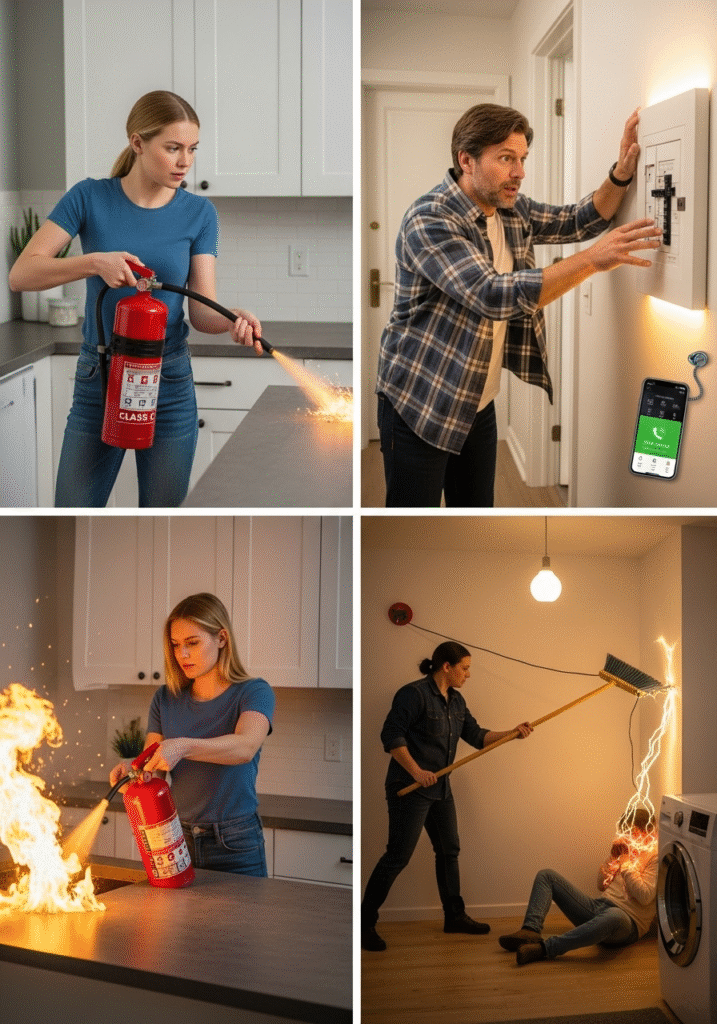
Regular Maintenance and Professional Inspections
When it comes to home electrical safety, prevention is always better than cure. Regular maintenance and periodic inspections by licensed professionals are key to identifying hidden hazards before they become dangerous. Electrical systems, like any other part of your home, age over time—and without proper care, they can develop faults that lead to fires, power surges, and safety risks.
It’s recommended that homeowners schedule a licensed electrician every few years to thoroughly inspect the home’s electrical wiring. This is especially important for older homes, where outdated or degraded wiring may not meet modern safety standards. A professional can also assess your circuit breaker panel, ensuring it’s not overloaded and is equipped with modern surge protectors to guard against sudden voltage spikes.
Upgrading to newer systems—like arc fault circuit interrupters (AFCIs) or ground fault circuit interrupters (GFCIs)—can greatly enhance safety, particularly in high-risk areas such as kitchens, bathrooms, and outdoor outlets. These devices quickly shut off power when irregularities are detected, helping to prevent shocks and electrical fires.
In addition to professional inspections, you should also implement a routine maintenance checklist for your household appliances. Simple tasks like cleaning air vents and dryer lint traps, replacing or cleaning filters in air conditioners, and checking power cords for wear and tear can prevent overheating and ensure appliances run efficiently.
Don’t overlook monthly smoke detector testing—these devices are your first line of defense in case of fire and must always be functional. Keep extra batteries on hand and replace them at least once a year, even if alarms seem fine.
By combining professional expertise with routine home care, you create a proactive approach to electrical safety—one that protects your family, preserves your appliances, and gives you long-term peace of mind.
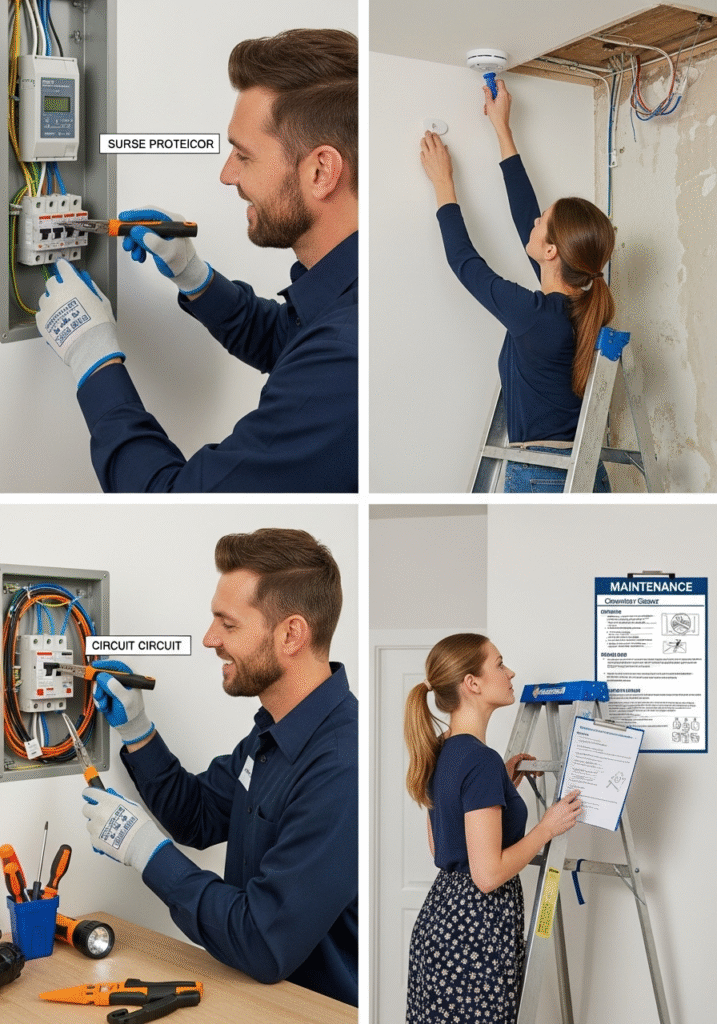
Final Thoughts: Prioritize Electrical Safety in Every Room
Electrical safety isn’t just a one-time task—it’s an ongoing commitment that should be practiced in every corner of your home. From the kitchen and bathroom to the garage and living room, each space presents unique challenges when it comes to safely using electrical appliances. Whether it’s a hairdryer near a sink, a space heater in the living room, or power tools in the garage, it only takes one oversight to cause serious harm.
Fortunately, keeping your home safe doesn’t have to be costly or complicated. It often starts with simple, everyday habits: unplugging appliances when not in use, checking cords and plugs for damage, and keeping electrical devices away from water. These small actions not only reduce the risk of fires and shocks but also help extend the lifespan of your appliances and reduce unnecessary energy consumption.
It’s also important to educate all members of the household, including children and elderly family members, about the basics of electrical safety. Teach them to recognize warning signs, avoid overloading sockets, and report any strange sounds, smells, or flickering lights immediately. Safety awareness creates a culture of responsibility that protects everyone in the home.
Additionally, upgrading outdated wiring, installing GFCIs in high-risk areas, and scheduling regular inspections by certified electricians can offer added layers of protection. These proactive measures may seem minor now, but they can prevent major damage and even save lives in the long run.
In a world where we rely more than ever on electricity, it’s essential to be smart, cautious, and informed. By taking responsibility for your home’s electrical safety today, you ensure a safer, more comfortable future for everyone under your roof.
Stay safe. Stay smart. And make your home shock-proof—one room at a time.
